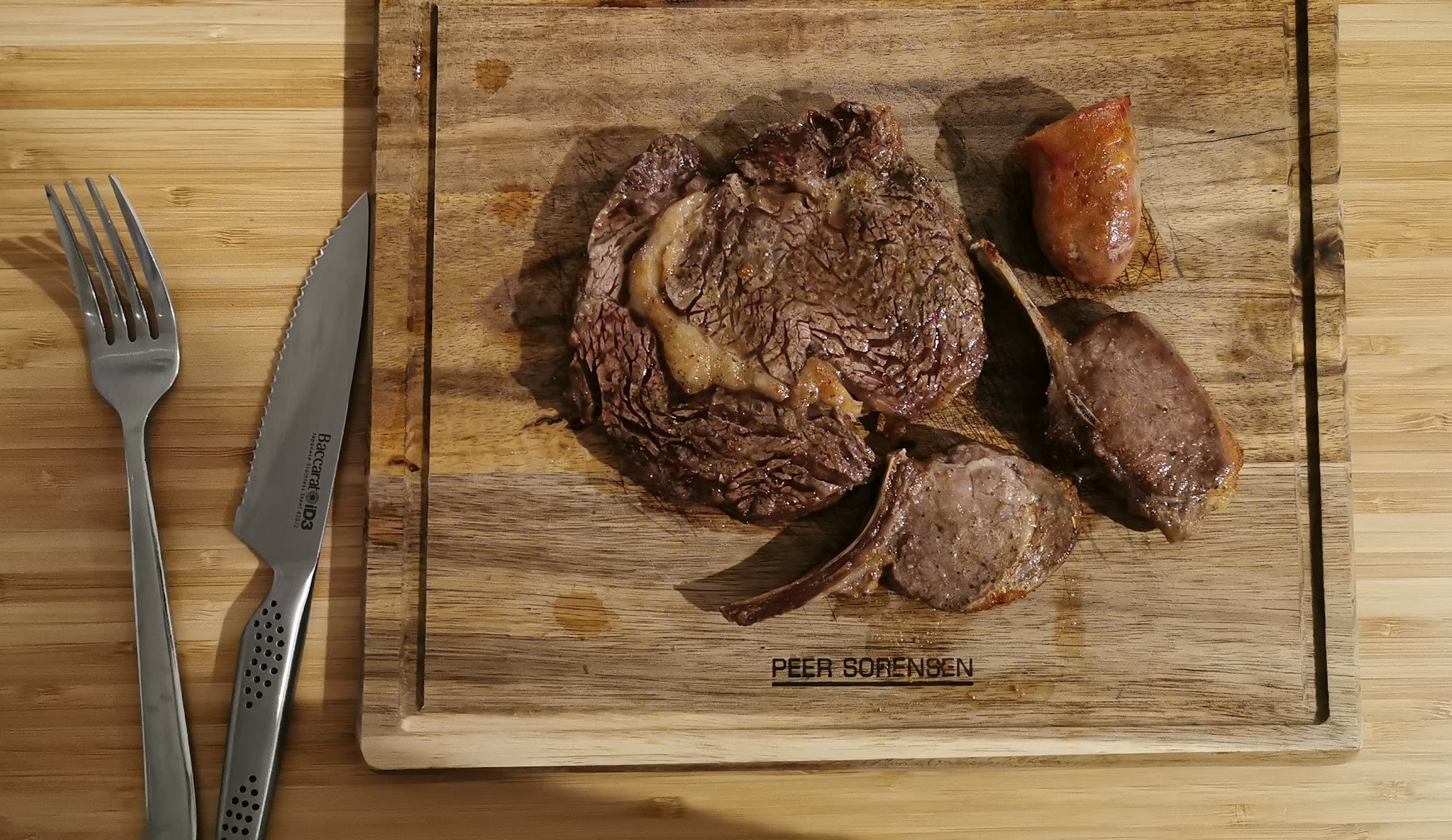What to Expect on the Carnivore Diet
Embarking on the carnivore diet is not merely a change in your food habits; it’s an entire shift in your lifestyle and can influence both your physical and mental well-being. Here’s what you might expect:
Physiological Changes
When you switch to a diet entirely made up of animal products, your body will undergo certain adaptations. These are some of the most commonly reported physical changes:
- Fat Loss and Muscle Gain: The carnivore diet is high in protein, a macronutrient known for its satiety factor and importance in muscle synthesis. Combined with the lack of carbohydrates, your body may shift towards using fat as its primary fuel source, leading to fat loss. The high protein content can also help in maintaining or gaining muscle mass.
- Digestive Changes: Many people experience changes in their digestion. This can range from an initial period of irregular bowel movements as your body adjusts to a lower fiber intake, followed by a new regularity as your gut adapts to your diet.
- Increased Energy Levels: Once the initial adaptation phase (commonly referred to as ‘keto flu’) is over, many people on the carnivore diet report a steady, consistent energy level throughout the day, as there are no blood sugar spikes and crashes as can be the case with carbohydrate-heavy diets.
Mental Clarity and Other Non-Physical Changes
The influence of the carnivore diet extends beyond just physical transformations. Many individuals also report changes in their mental and emotional state:
- Mental Clarity: With the elimination of blood sugar spikes and crashes, you may find that your mental fog lifts. Many people report experiencing sharper focus, improved memory, and overall better cognitive function on a carnivore diet.
- Mood and Emotional Stability: Stable energy levels can translate into more balanced moods. Some people find that their mood swings decrease and that they experience a general sense of well-being.
- Reduced Cravings: With a diet free from sugar and other processed carbohydrates, you may find your cravings for such foods diminishing over time. This can make maintaining the diet easier as you adjust to your new way of eating.
Remember, everyone’s experience with the carnivore diet can vary. Some people may experience these changes within a few weeks, while others may take longer. It’s essential to listen to your body and adjust as necessary. In the next sections, we’ll cover tips on transitioning to the carnivore diet and how to handle any potential hurdles you might face.

A Day in the Life of a Carnivore Dieter
Embracing the carnivore diet is a unique journey that involves more than just swapping plants for meat. It’s about learning to listen to your body’s hunger signals and adopting a completely new way of eating. It’s worth noting that many carnivore dieters often find themselves needing only one or two hearty meals per day instead of the traditional three meals. This shift usually happens over time, as individuals learn to heed their hunger cues and eat to satiety with nutrient-dense animal-based foods. This approach promotes a healthy, intuitive relationship with food that’s not dictated by the clock. Now, let’s take a closer look at what a typical day might look like:
Meal Suggestions and Examples
The carnivore diet is straightforward in that it focuses on consuming animal products. However, meal planning and preparation are still crucial to ensure a well-rounded diet. Here are some meal examples to inspire you:
- Breakfast: A hearty breakfast could be a pair of grass-fed beef steaks, a couple of free-range eggs, and a mug of bone broth. Some people find they’re not hungry in the morning and prefer to wait until later in the day to eat – this is a personal choice and can be adjusted based on your body’s signals.
- Lunch: Lunch might involve a plate of salmon sashimi, a generous portion of roast chicken, or a lamb chop with a side of beef liver. Remember, organ meats are a powerhouse of nutrients and should be incorporated into your diet whenever possible.
- Dinner: Dinner can be as robust or as light as you’d like. Some people prefer a sizable cut of fatty meat like ribeye steak, while others may opt for a lighter fare of baked fish. The key is to focus on high-quality animal products.
Importance of Listening to Your Body’s Hunger and Fullness Cues
On the carnivore diet, it’s crucial to pay attention to your body’s signals. This is not a diet that encourages calorie counting or strict meal timings. Instead, you’re encouraged to eat when you’re hungry and stop when you’re full. Here are a few tips to tune into your body’s cues:
- Avoid eating out of habit: If you’re used to eating at specific times or eating certain ‘snacks’ throughout the day, this might take some adjustment. Eat when you’re genuinely hungry, not just because the clock says it’s mealtime.
- Pay attention to satiety: The carnivore diet is naturally high in protein and fat, both of which are incredibly satiating. You might find that you’re not as hungry as often and that’s okay.
- Stay flexible: Some days, you might feel hungrier than others. This is completely normal and it’s important to listen to your body. If you’re hungry, eat. If you’re not, it’s okay to wait until you are.
Remember, the carnivore diet isn’t just about what you eat, but also about developing a healthier, more intuitive relationship with food. By listening to your body’s signals, you can fully harness the power of the carnivore diet.
How to Transition to the Carnivore Diet
Shifting from a standard or even a low-carb, high-fat diet to a carnivore diet can be a considerable change. It’s essential to approach this transition with a plan and give your body the time it needs to adjust. Here are some tips to help you transition smoothly and manage the potential side effects like the ‘keto flu.’
Absolutely, here are the modified steps and additional information:
Steps to Gradually Shift from a Regular or Keto Diet to a Carnivore Diet
Transitioning to a carnivore diet is a process that ultimately aims to move the body away from relying on glucose (sugar) for energy and towards using ketones derived from fat. Here are the updated steps to make this transition smoother:
- Step 1: Increase Protein, Increase Fat, and Reduce Carbs: Begin by increasing your intake of high-quality animal proteins and fats while concurrently reducing your carbohydrate intake. Consider switching from lean cuts of meat to fattier ones – the added fat can help keep you satiated and provide the energy you need as you reduce carbs.
- Step 2: Gradually Eliminate Plant Foods: As you increase your intake of animal foods, phase out plant foods from your diet. This could mean eliminating one food group at a time, starting with high-sugar fruits and starchy vegetables, and moving on to legumes, nuts, and finally, leafy greens.
- Step 3: Shift to Fat as Primary Fuel Source: Once you’ve removed plant foods, your body will have to switch to using fat as its primary source of energy. This transition might take anywhere from 1-3 days as your body ramps up its ketone production.
- Step 4: Embrace Animal Foods: Now that your body is primarily burning fat for fuel, continue to consume a variety of animal foods, including fatty cuts of meat, fish, eggs, and offal. Remember, variety can help ensure you’re getting a wide range of nutrients.
Managing the ‘Keto Flu’ and Adaptation Period
As you transition to a carnivore diet, you might experience a collection of symptoms often referred to as ‘keto flu.’ This can include fatigue, headaches, irritability, and difficulty concentrating. These symptoms occur as your body switches from using glucose for energy to using fat. Here are a few strategies to manage this adaptation period:
- Stay Hydrated: As your body adjusts to burning fat for fuel, it may shed excess water, which can lead to dehydration. Make sure to drink plenty of water and replenish electrolytes.
- Get Enough Salt: Salt is a crucial electrolyte, and your needs may increase when switching to a carnivore diet. Don’t be afraid to season your food well.
- Rest and Relax: Your energy levels may fluctuate during this adaptation period. Listen to your body and rest if needed. Remember, this is a temporary phase, and improved energy levels are on the horizon.
- Stay Positive: It’s important to remember why you’re making this change and stay focused on the long-term benefits. Reach out to the carnivore community for support and encouragement.
Transitioning to a carnivore diet is a significant change, but with a strategic approach, you can make the process smoother. Remember to be patient with yourself and give your body time to adjust.

The Importance of Quality in the Carnivore Diet
The carnivore diet is not just about consuming animal products; it’s also about prioritizing the quality of these foods. Quality plays a significant role in the nutritional value of the foods you eat and can make a substantial difference in your overall health outcomes. Let’s explore the importance of sourcing high-quality meat and the value of organ meats and bone broth.
Emphasizing the Role of High-Quality Meat Sources
While the aim is to consume the highest quality meat possible, it’s important to note that you can still reap many of the benefits of a carnivore diet even with conventionally raised meat. The carnivore diet’s core principle – focusing on nutrient-dense, whole animal foods and eliminating inflammatory plant foods – can lead to significant health improvements regardless of the meat’s origin.
That being said, the ideal is to aim for the best quality sources of meat you can afford. The good news is, this doesn’t mean you need to dine on prime ribeye steaks every day. More affordable cuts of meat can still provide a wealth of nutrition.
For example, chuck is a less expensive cut of meat that can be made into mince for burgers, meatloaf, or used in egg scrambles. This is an excellent way to enjoy the benefits of grass-fed, pasture-raised meat without breaking the bank. Similarly, less popular, but nutritionally rich options like lamb shoulder, beef brisket, or pork belly can often be bought at lower prices.
Remember, the carnivore diet is flexible and can be adapted to suit various budgets. The key is focusing on nutrient-dense, whole animal foods and moving towards higher quality sources as much as your circumstances allow.
Discussing Organ Meats and Bone Broth
While muscle meat (like steaks and chicken breasts) will make up a significant portion of your diet, it’s important not to overlook the value of organ meats and bone broth. Organ meats are some of the most nutrient-dense foods on the planet, packed with vitamins and minerals that can’t be obtained in the same quantities from muscle meat alone.
Liver, in particular, is a nutritional powerhouse, rich in vitamins A and B, folic acid, iron, and copper. Other organs like heart, kidney, and brain are also nutrient-dense and provide a broader spectrum of nutrition.
Bone broth is another valuable addition to the carnivore diet. It’s rich in minerals and nutrients like collagen and gelatin, which can support skin, joint, and gut health. Making bone broth at home can be a cost-effective way to make use of animal bones and connective tissue.
In conclusion, remember that a carnivore diet is not just about eating meat, but about eating high-quality animal foods that provide the broadest spectrum of nutrition. Prioritizing quality and variety, including organ meats and bone broth, is key to optimizing health on this diet.

Exercise and the Carnivore Diet
Exercise and physical activity are integral to a holistic approach to health, and the carnivore diet is no exception. The diet’s high protein content is beneficial for muscle maintenance and growth, while the focus on animal fats can provide a steady, long-lasting source of energy, which many find enhances their physical performance. Let’s delve into the relationship between exercise and the carnivore diet.
The Role of Physical Activity
Physical activity is not just an important component of overall health—it’s also a key factor in maximizing the benefits of the carnivore diet. When combined with a diet high in protein and fats, physical activity helps promote muscle growth, improves cardiovascular health, and enhances mental wellbeing.
One distinct advantage many carnivore dieters find is a significant shift in their energy levels and physical performance. Instead of relying on quick-burning carbohydrates for energy, your body taps into its fat reserves for fuel. This switch to a fat-based energy source can lead to more stable energy levels throughout the day, avoiding the energy spikes and crashes often associated with carbohydrate-based diets.
Furthermore, several athletes on a carnivore diet have reported improved performance following an initial adjustment period. Rather than carb-loading to prepare for endurance exercises, they rely on the consistent energy provided by fats, finding that their stamina and endurance improve. It’s worth noting, however, that everyone’s experience will vary, and what works for one person may not work for another.
Exercise Recommendations
The carnivore diet doesn’t prescribe a specific exercise regime. The most effective routine is one you enjoy and can maintain consistently. That said, incorporating a mix of resistance training, cardiovascular exercise, and flexibility and balance practices can optimize your health and align well with the diet.
- Resistance Training: With a high intake of protein from your diet, engaging in regular resistance or strength training can be especially beneficial. It helps you build and maintain muscle mass, boosts your metabolic rate, and supports bone health.
- Cardiovascular Exercise: Regular cardio is critical for heart health. The intensity and duration will depend on your fitness level and personal goals, but the continuous energy supplied by a fat-based diet can support longer and more consistent workouts.
- Flexibility and Balance Exercises: Practices such as yoga or Pilates promote flexibility and balance, complementing your strength and cardio workouts. They can also aid in stress reduction and mental wellbeing.
Before starting a new exercise program, it’s always a good idea to consult a healthcare or fitness professional to ensure your activities align with your health status and personal goals.
In conclusion, the unique benefits of the carnivore diet can support and enhance your exercise routine. By promoting consistent energy levels and improved physical performance, this diet and a balanced exercise routine can lead to an overall healthier lifestyle.
Navigating Social and Lifestyle Changes
Adopting a carnivore diet can lead to significant changes in your lifestyle, especially when it comes to social situations involving food and your grocery shopping and meal prep routine. With some tips and strategies, you can seamlessly integrate your new dietary approach into your daily life.
Eating Out and Social Events
Eating out or attending social events can be challenging on a carnivore diet. Here are some suggestions to help you navigate these situations:
- Plan Ahead: Check restaurant menus online before you go out. Many places offer meat-based dishes that can be customized to fit your diet. Don’t be afraid to ask for modifications, such as swapping out fries for a side of bacon or asking for a bunless burger.
- Speak Up: If you’re attending a dinner party, let the host know about your dietary preferences in advance. They might be able to accommodate you, or you can offer to bring a dish that you can eat and share.
- Keep it Simple: Look for straightforward, meat-based dishes on menus, such as steak, grilled fish, or chicken. Avoid dishes that may have hidden sources of carbohydrates, like sauces or marinated meats.
Grocery Shopping and Meal Prep Tips
A few changes to your grocery shopping and meal preparation routine can make following the carnivore diet easier:
- Stock Up on Staples: Fill your pantry with a variety of meats to avoid monotony and to ensure you always have options on hand. This can include beef, pork, poultry, fish, and eggs. Don’t forget about organ meats and bone broth for added nutritional value.
- Learn Basic Butchery Skills: Knowing how to butcher larger cuts of meat can save you money. You can often buy these cuts at a lower cost and then portion and freeze them for later use.
- Prep in Advance: If your schedule allows, set aside some time for meal preparation. This can involve grilling several steaks at once or slow-cooking a large roast to provide meals for the next few days.
Embracing a carnivore diet does not mean you have to sacrifice social outings or spend endless hours in the kitchen. With a little planning and preparation, you can smoothly incorporate this way of eating into your lifestyle.
11 months #carnivorediet
Age 51
Weight: 117kg –> 86kg
Waist: 118cm –> 93cm
I found my neck!
Psoriasis on hands – gone!
Chronic recurring back pain – gone! pic.twitter.com/y0Xfi5LNZy— Theo 🥩 (@CarnivoreWiki) July 17, 2023
Debunking Myths and Handling Criticism
Like any diet that deviates from mainstream nutritional guidelines, the carnivore diet often faces skepticism and criticism. Understanding common misconceptions and learning how to handle skepticism can help you navigate conversations about your dietary choices.
Common Misconceptions About the Carnivore Diet
Several myths surround the carnivore diet. Let’s debunk some of the most common ones:
- Myth: The Carnivore Diet Lacks Fiber: Many believe a diet without plant-based foods will lead to digestive issues due to lack of fiber. However, many carnivore dieters report improved digestion as their bodies adapt to a meat-only diet. There’s also ongoing debate in nutritional science about the necessity and benefits of dietary fiber.
- Myth: You’ll Develop Nutrient Deficiencies: Critics often argue that a carnivore diet lacks essential vitamins and minerals found in plants. However, animal products contain virtually all the nutrients our bodies need in highly bioavailable forms. For instance, organ meats are some of the most nutrient-dense foods on the planet.
- Myth: The Carnivore Diet Raises the Risk of Heart Disease: The assumption that high meat and fat intake leads to increased heart disease risk is based on outdated and contested research. More recent studies suggest that sugar and processed carbohydrates play a significant role in heart disease, not saturated fat or cholesterol.
Dealing with Skepticism from Others
Changing your diet in a way that challenges conventional wisdom can sometimes lead to misunderstanding and criticism from others. Here are a few strategies to deal with skepticism:
- Educate Yourself: The better you understand the principles and benefits of the carnivore diet, the more confidently you can discuss it with others. Familiarize yourself with the science behind it and the experiences of those who have benefited from it.
- Share Your Experiences: If you’re comfortable doing so, share your personal experience and improvements in health since starting the carnivore diet. Real-life experiences can be powerful tools for communication.
- Choose Your Battles: Not everyone will be open to understanding your dietary choices, and that’s okay. It’s important to remember that you’re making these choices for your health, and you don’t need to justify your decisions to everyone.
Navigating criticism and skepticism can be challenging, but armed with the facts and a calm demeanor, you can confidently handle these situations. Remember, the goal of your carnivore lifestyle is your health and wellbeing. Everyone’s journey is personal, and what works for you may not work for others—and that’s perfectly okay.
Health Monitoring and the Carnivore Diet
While the carnivore diet has been associated with a host of health benefits, it’s crucial to monitor your health regularly to ensure you’re meeting your nutritional needs and making progress towards your goals.
Recommendations for Regular Check-ups and Blood Work
Given the significant dietary shift when transitioning to a carnivore diet, regular health check-ups and blood work are advisable:
- Regular Check-ups: Regular visits to your healthcare provider will help monitor your general health and any specific concerns. These visits are an opportunity to discuss any changes in your health since starting the carnivore diet and seek professional advice on adjusting your diet as needed.
- Blood Work: Regular blood tests can help monitor markers like lipid profiles, blood sugar levels, liver and kidney function, and nutrient levels. While these tests can provide valuable insights, it’s important to consider them in the context of your overall health and wellbeing.
Keeping Track of Your Progress
Self-monitoring is a crucial part of any diet. Here are a few ways to track your progress:
- Food Diary: Keeping a food diary can help you understand how different foods affect you. Note what you eat, when you eat, and how you feel afterward.
- Symptom Journal: If you’re using the carnivore diet to address specific health concerns, keeping a symptom journal can be beneficial. Record your symptoms and their severity to track changes over time.
- Physical Measurements: Depending on your goals, you might want to track physical measurements, such as weight, body fat percentage, or waist circumference. Remember, these are just numbers and not the only indicator of health.
- Use of Apps and Fitness Devices: Various health and fitness apps can help you monitor your progress. Some apps allow you to log your meals, track your symptoms, or monitor your physical measurements. In combination with wearable devices like Fitbits or smartwatches with health sensors, you can track your physical activity, sleep patterns, and even heart rate variability. This technology can provide valuable insights into your overall wellbeing and how your body is responding to the carnivore diet.
Remember, the ultimate goal is to feel better and healthier. Regular monitoring, both medical and personal, can provide invaluable insights into your health and help you fine-tune your diet to best serve your needs.
FAQ
In this section, we’ll address some of the most commonly asked questions about the carnivore diet. Remember, while we provide general advice, everyone’s experiences and needs will vary, so it’s important to listen to your body and consult with a healthcare professional as needed.
Can I eat any animal products on the carnivore diet?
Yes, you can eat any animal products on the carnivore diet. This includes all types of meat (beef, chicken, pork, fish, etc.), organ meats, eggs, and dairy, though some people choose to limit or avoid dairy based on personal tolerance.
How will the carnivore diet affect my digestion?
Many people worry about the lack of fiber in the carnivore diet. Interestingly, many carnivore dieters report improved digestion after an initial adaptation period. Remember, our bodies are adaptable, and while dietary fiber is often touted as essential for gut health, it’s not necessarily required for everyone.
Can I drink coffee or tea on the carnivore diet?
While coffee and tea are not animal products, many people on the carnivore diet choose to include them. The key is to listen to your body. If you notice adverse effects from caffeine, it may be best to cut it out.
Can I use spices and sauces on my meat?
Purists argue that only animal products should be consumed on the carnivore diet, which would exclude plant-based spices and most sauces. However, many people find they can tolerate small amounts of spices and certain sauces without issues. It’s all about finding what works best for you.
Do I need to take supplements on the carnivore diet?
Animal products are extremely nutrient-dense, and most people find they don’t need to supplement on a carnivore diet. However, individual needs can vary, so it’s always a good idea to consult with a healthcare provider, especially when making significant dietary changes.
How do I know if the carnivore diet is working for me?
This can depend on your initial reasons for trying the diet. Many people experience benefits such as weight loss, increased energy, improved mental clarity, and reduction in symptoms of various health conditions. Keeping track of your experiences through a journal or a health app can be helpful in determining if this diet is working for you.
Is the carnivore diet safe long term?
More research is needed to understand the long-term effects of the carnivore diet. However, many people have followed this way of eating for years and report significant health improvements. As with any diet, it’s crucial to listen to your body and work with a healthcare provider to monitor your health.
Remember, the carnivore diet is a highly individualized way of eating, and what works well for one person might not work as well for another. Always listen to your body and make adjustments as necessary.
Will the carnivore diet make me lose muscle mass?
Contrary to what you might think, the carnivore diet can actually support muscle maintenance and growth. Animal proteins are complete proteins, meaning they contain all essential amino acids necessary for muscle protein synthesis. Many people on the carnivore diet report maintaining or even gaining muscle mass. However, regular resistance training and adequate protein intake are important for optimal muscle health.
Will I get scurvy on the carnivore diet?
Scurvy is caused by vitamin C deficiency. While plant foods are typically associated with vitamin C, it’s important to note that our need for vitamin C decreases when we consume fewer carbohydrates. Furthermore, there is vitamin C in animal products, especially in organ meats and seafood. Reports of scurvy among carnivore dieters are virtually non-existent.
Is the carnivore diet the same as a ketogenic diet?
While both diets are low-carb and can put your body into a state of ketosis, they are not exactly the same. A ketogenic diet typically includes a variety of plant-based foods and fats, such as vegetables, nuts, seeds, and oils. On the other hand, the carnivore diet consists only of animal products. Both diets have their own unique benefits and may be suitable for different individuals depending on their health goals and preferences.
Conclusion
Embarking on the carnivore diet is a journey, one that has the potential to transform your health and well-being. By now, you have a good understanding of what to expect when you switch to this way of eating, how to transition smoothly, and how to navigate through common challenges. Remember, the essence of the carnivore diet lies in its simplicity – eat when you’re hungry, stop when you’re full, and choose animal-based foods.
While it may seem daunting at first, especially when facing social situations or dealing with skepticism from others, know that you’re not alone. There’s a supportive community of fellow carnivore dieters who have been in your shoes and can offer practical advice based on their experiences. Furthermore, you can always refer back to this guide whenever you need a refresher or encounter a hurdle.
Lastly, don’t forget to celebrate your wins, no matter how small they seem. Each step you take on this journey is a victory in its own right. Whether it’s overcoming a craving, noticing an improvement in a health condition, or simply feeling more energized and focused, these are all signs that you’re on the right path.
Embrace this new lifestyle with curiosity and patience. Remember, it’s not about perfection but progress. Here’s to your health and success on the carnivore diet!

